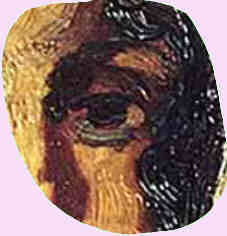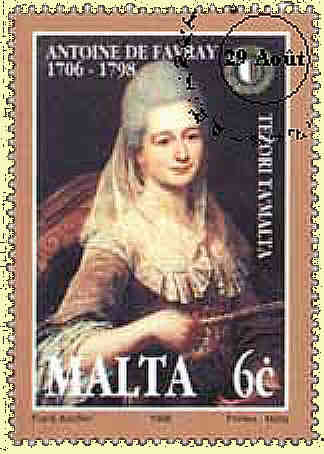— Born in Ukraine. He studied in an Art School in Kiev. In 1913 he went to Paris to study art at the École Nationale des Beaux Arts and became a friend of Haim Soutine. He was made prisoner of the Germans in Royan in 1939. In 1958 he moved to Israel, where he died.
— French painter and sculptor of Ukrainian birth. He came from an orthodox Jewish family; his father was sexton of a synagogue, and he was originally intended to become a rabbi. After studying at the School of Fine Arts in Kiev, he visited Paris for the first time in 1913 and enrolled in Fernand Cormon's class at the Ecole des Beaux-Arts, where his fellow students included Chaďm Soutine. He was influenced by Rembrandt, by the Fauves (especially Derain) and, briefly, by Cubism. Mané-Katz returned to Ukraine after the outbreak of World War I. There he was appointed professor at the academy in Khar'kov (now Kharkiv) in 1917, after the Revolution. He left again for Paris in 1921, this time with the intention of taking as his principal theme life in the ghettos of Eastern Europe, the rabbis and Talmudic students, the fiddlers and drummers, comedians and beggars, for example in The Eternal People (1938); he also painted a number of landscapes and flower studies. His style became expressionist and baroque, with loose brushwork and rhythmical forms. He obtained French citizenship in 1927 but after the fall of France took refuge from 1940 to 1945 in New York, where he also began to make a few sculptures, such as the Double-bass Player (bronze, 61cm high, 1943). After the war his paintings became much bolder in their colors and patterning. He made a number of visits to Israel and left the works in his possession to the town of Haifa, where they formed the basis of a museum devoted to his work. In 1958 he moved to Israel, where he died in Tel Aviv.
— Ohel Mané-Katz was born in Kremenchug, Ukraine, a province of the Russian Empire. He studied in religious schools and was expected to become a Rabbi. At age 16, however, young Ohel developed an interest in art. In due time, he graduated from the Vilnius School of Art and the Academy of Art in Kiev. In 1913 he moved to Paris, along with many promising artists of the day. He enrolled in the prestigious École Nationales des Beaux-Arts and studied under Fernand Cormon, teacher of Vincent van Gogh. It was there he befriended Soutine and Chagall. Who knows who influenced whom during those formative years? We do know that Chagall and Katz wound up with similar styles and common religious themes. At the outbreak of WWI the artist returned to Russia, only to surface again in Paris soon thereafter. He became a citizen of France in 1927. Now famous, the prominent artist traveled to Palestine and established a workshop in Haifa, a city destined to become his permanent artistic residence. The artist bequeathed hundreds of paintings and sculpted works to this "adopted ancestral home." Even though Mané-Katz was a fine sculptor, he is known to the world as an exemplar of Jewish Expressionism, a painter. Today a museum in Haifa is dedicated to his work. One of his paintings, Rabbi in a Yellow Gown, is on display at the Vilna Gaon Jewish Museum.
— Mané-Katz was born into a religious Jewish family in the Ukraine and impregnated with Jewish mysticism. Mané-Katz studied art in Kiev and came to Paris in 1913. There he befriended Soutine and Chagall and discovered the works of Rembrandt exhibited in the Louvre museum. He returned to Russia during the First World War and worked for the Russian Ballets. Back in Paris in 1921, he started to collect many Jewish art objects and took French citizenship in 1927. Two years later he traveled to Palestine to feel the air of the Holy Land. He exhibited his works in many Salons until 1939 and then sought refuge in the US during World War Two. Back again in Paris in 1945, he continued to work intensely producing in a joyful manner hundreds of Rabbinical portraits and Judaic themes as if he wanted to partly fulfil his father’s wish to see him become a Rabbi.
— Mane-Katz was born in the Ukraine. At age 17 he was admitted to the Beaux Arts in Kiev but escaped to France in 1913. When World War I began in 1914, he tried to join the Foreign Legion but could not because he was too short. He continued studying at the Beaux Arts of Paris. His first exhibit was in Saint Petersburg n 1914. In 1917 he joined the Soviet Revolution in Kiev but was horrified by Stalinism. He escaped to France in 1926, and became French. Mane-Katz was a great traveler from 1927 to 1939. He went all over the world painting and showing his masterpieces. Drafted in 1939, he was taken prisoner by the Germans, escaped, and went to New York where he stayed until 1945, showing his paintings at Katia Granoff Gallery, at Wildenstein, etc. After the war he resumed traveling, painting, and showing in Brazil, Japan, Isreal, Argentina, Switzerland. Mané-Katz is one of the main masters of the "École de Paris". His painting is extremely powerful but often somber and even sad.

— Portrait of a Young Jewish Woman(1928, 55x46cm; 842x700pix; 147kb — ZOOM to 1684x1400pix, 300kb)
— Rabbi Studying (62x50cm)
— Father and Son (74x74cm)
— Chaim Soutine peintre de plein air (30x36cm; 322x397pix, 48kb)
— Red Gladiolas (91x51cm)>
— Place de la Concorde (74x91cm)>
— Russian Shtetl (1931) In 1931, when Mané-Katz painted this fierce Russian landscape, he had already acquired French citizenship and was a successful artist in his adopted country. Mané-Katz first arrived in Paris in 1913, staying only one year before returning to the Ukraine. He settled in France in 1921 and quickly became identified with the Jewish artists of Montparnasse. Although religious subjects and Jewish genre scenes were rare among the avant-garde, he remained faithful to his orthodox heritage, choosing as his primary theme life in the shtetls of Eastern Europe. Russian Shtetl shows Mané-Katz’s admiration for Rembrandt in its dark, northern tone. The tumultuous brushwork and violent masses of somber color that engulf the lone figure convey the harshness of everyday life.
— Hassidic Child (33x41cm; 488x688pix, 24kb) Sadness, solitude, resignation, all these appear in the eyes of this "Hassidic child". Still, faith is there, and its somber joy! A heartbreaking picture!
— The Yeshiva Boy (1950, 24X18cm) _ At the age of 16, Katz went to the Academy of Kiev where he started to paint Chassidic subjects drawing from his environment of the Yiddish shtetl and elaborating on them in poetic terms and on grandiose scale. In 1921 he exhibited in Paris. He is especially known for his glowing and sumptuous color harmonies and his nervous line. His paintings executed in thick roughly textured layers of colors and his long and impulsive brushstrokes determine the visual rhythm and movement of his pictures such as this one.
— The Rabbi — Snowy Landscape (1961, 54x65cm; 385x471pix, 21kb)
— Rabbi in a Yellow Gown (1925, 38x47cm) _ Mané-Katz was born to a religious family. He was expected to be a Rabbi but became an artist instead, producing joyful rabbinical portraits like this one. Painted with bold and whimsical brushstrokes, the "Yellow Rabbi" howls of Jewish tradition. The artist was exposed to this stylish exaggeration at Berlin Academy of Art, the birthplace of modern expressionism. He continued his training in Paris, working with Soutine and Chagall. Katz and Chagall would develop a semblance of common style and subject matter, devoted to Jewish life and Judaic themes. Today Mané-Katz is recognized as an exemplar of Jewish Expressionism.
 —
In 1738 he was a private student of Jean-François de Troy II, who was then
director of the Académie de France in Rome. In 1739 de Favray became an
official student at the Académie. Among his student works is a copy of Raphael’s
Fire in the Borgo, which was exhibited in Paris in 1741. In 1744
he left Rome for Malta, remaining there for much of the rest of his career
and devoting himself primarily to portraiture and genre painting. His ambition
as a history painter, however, was fulfilled to a certain extent as a result
of the patronage of two Grand Masters of the Order of the Knights of Malta,
Manoel Pinto da Fonseca and Emmanuel de Rohan. De Favray's first dated picture
painted in Malta is a Portrait of a Maltese Lady (1745). Portraits
and island scenes showing the inhabitants in local costume assured him a
certain fame in France; he reserved a less exotic portrait style for his
official Maltese clientele.
—
In 1738 he was a private student of Jean-François de Troy II, who was then
director of the Académie de France in Rome. In 1739 de Favray became an
official student at the Académie. Among his student works is a copy of Raphael’s
Fire in the Borgo, which was exhibited in Paris in 1741. In 1744
he left Rome for Malta, remaining there for much of the rest of his career
and devoting himself primarily to portraiture and genre painting. His ambition
as a history painter, however, was fulfilled to a certain extent as a result
of the patronage of two Grand Masters of the Order of the Knights of Malta,
Manoel Pinto da Fonseca and Emmanuel de Rohan. De Favray's first dated picture
painted in Malta is a Portrait of a Maltese Lady (1745). Portraits
and island scenes showing the inhabitants in local costume assured him a
certain fame in France; he reserved a less exotic portrait style for his
official Maltese clientele.